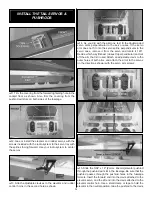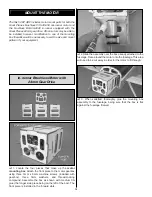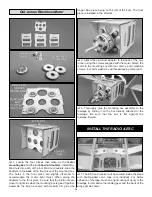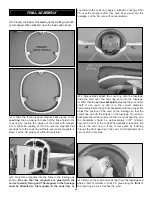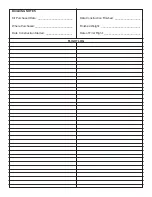
Fly a straight pass across the field at 75 feet high and 100 feet
out and pull the model vertical. Roll the model until the top of it
is facing you and slowly begin to reduce power. As the model
begins to slow down to 10 mph or so, slowly add a little bit of
power back in. You will have to adjust the throttle as needed,
but make your adjustments smooth. Some right aileron may be
needed to keep the model from torque rolling. Use the rudder
and elevator to keep the nose pointing straight up. Be patient
as this maneuver will take a while to learn.
This is the same as the vertical hover but without the use of
right aileron to keep the model from rolling. If needed, you
can use a little left aileron to speed the roll up. As the model
rotates around, the controls will appear to be reversed to
you but only the orientation of the model has changed.
The harrier is nothing more than a high angle of attack flying
stall. Check the stall characteristics of your plane before
proceeding with this maneuver. Bring your plane across the
field at 75 feet high and 100 feet out away from yourself. Slowly
pull back on the elevator while reducing throttle. The nose of
the plane should come up. Depending on the plane/setup, you
may have to make constant aileron (wing walking) and rudder
corrections for this maneuver. As the nose of the plane comes
up, start adding in a little bit of power to help maintain airspeed.
The rudder is now used to turn the model. This maneuver will
take some practice as there are a lot of small corrections made
to keep most planes in the maneuver.
This is one maneuver where less control is needed. Too
much elevator and the model goes into an uncontrollable
stall. The C.G. of the plane will have a large effect on the
stability of the model during this maneuver. Some planes
perform better with more elevator deflection and a farther
forward C.G. while other planes prefer a further aft C.G. and
less elevator deflection. Elevator to flap mixing can be used
on airplanes with marginal wing area, and some planes
won’t stall so elevator to spolieron mixing will be needed.
Once you get comfortable with the up-right harrier, it’s time
to work rolls into the mix. From an up-right harrier, add in left
aileron and change from up elevator to down elevator when
inverted. If you are comfortable with four point rolls and slow
rolls, inputting rudder on the knife edges can improve the
maneuver considerably. To turn the model, simply input the
elevator or rudder a little earlier. It’s all a matter of timing.
Climb vertically and bring the model to a hanger, but do not
stop long enough to let the torque pull the model around
(climbing or sliding slightly will not be noticeable to spectators
but will keep air flowing over the ailerons and provide you roll
authority to stop the torque). When the model is hanging, rock
the plane left with rudder, then apply full throttle and full right
rudder and hold both, completing 3/4s of a VERY tight Knife
Edge Loop and flying out Knife Edge. When done correctly,
the plane pivots around the wing tip in a very small area. This
maneuver can be done either direction.
Pinwheel
Rolling Harrier
Harrier
Torque Roll
Vertical Hover
26


